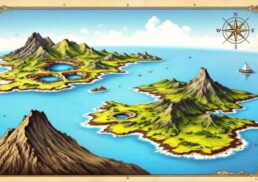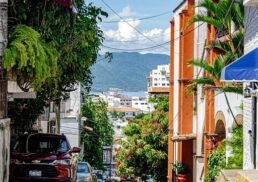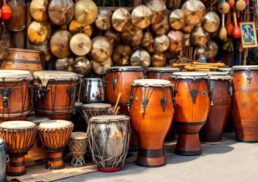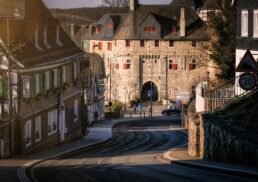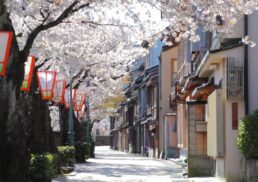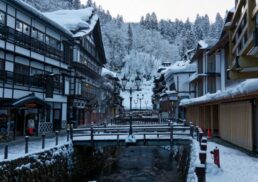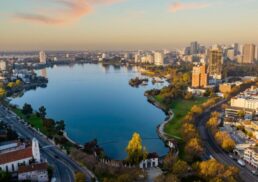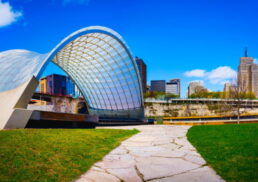Looking to explore the Japan Kansai area? This guide covers the top 10 must-visit spots you can’t miss. From Kyoto’s historic temples to Osaka’s lively streets, discover the region’s rich history, vibrant culture, and delicious food. Whether you’re a history buff, a foodie, or an adventure seeker, Japan Kansai area has something special for you.
Table of Contents
Key Takeaways
Kyoto, Osaka, and Nara in the Kansai region offer a blend of rich cultural heritage, historical sites, and unique culinary experiences, making them must-visit cities with UNESCO World Heritage sites and vibrant local traditions.
Kansai’s cities are well-connected through an efficient transportation network, including the Shinkansen and local train lines, enabling easy travel between destinations and enhancing visitor convenience.
Cultural festivals such as Kyoto’s Gion Matsuri, Osaka’s Tenjin Matsuri, and Kobe’s Luminarie showcase the region’s deep-rooted traditions, historical significance, and community spirit, providing immersive and vibrant cultural experiences.
Introduction
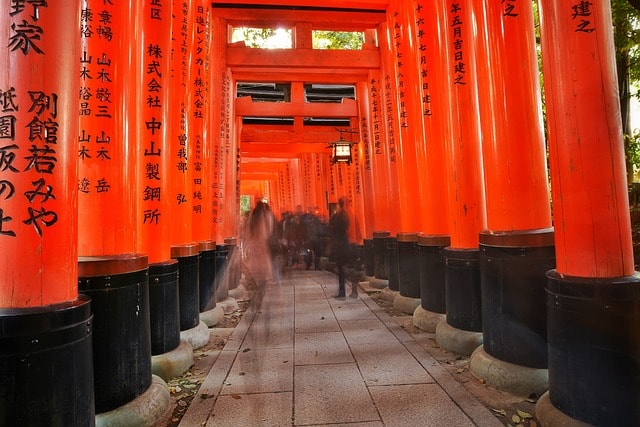
The Kansai region, also known as the Kinki Region, has long been the political, cultural, and economic center of western Japan. This vibrant southern central region, located in the heart of Honshu, Japan’s main island, is composed of seven prefectures. For centuries, Kansai served as the heart of Japanese civilization, with ancient capitals in Nara and Kyoto. Today, it continues to be a focal point of history, culture, and innovation.
Among the major cities in the Kansai region, including other major cities, are:
Kyoto, often referred to as the cultural capital of Japan, boasts the highest number of national treasures and is home to 17 UNESCO World Heritage sites, making it a haven for history enthusiasts.
Osaka and Kobe emerged from the ashes of war to become bustling hubs of modernity, juxtaposing their traditional roots with contemporary flair.
Nara, known for its ancient temples and friendly deer population, offers a serene escape from the hustle and bustle of city life.
Each of these cities offers a unique glimpse into Japan’s past and present.
Visitors to Kansai are drawn not only by its historical treasures but also by its culinary delights. From the delicate flavors of Kyoto’s kaiseki cuisine to the hearty street foods of Osaka, the region offers a gastronomic adventure like no other. Whether you’re exploring sacred Shinto shrines, marveling at architectural marvels, or savoring local delicacies, the Kansai region promises an enriching and unforgettable experience.
Kyoto: The Timeless Imperial Capital
Kyoto, the jewel of the Kansai region, stands as a testament to Japan’s rich cultural heritage. This ancient city, which once served as the imperial capital for over a thousand years, is renowned for its well-preserved temples, shrines, and traditional Japanese culture. As you wander through Kyoto, you’ll encounter a myriad of historical sites and sacred places that offer a glimpse into the spiritual and artistic traditions that have shaped Japanese civilization.
Kyoto’s significance in the Kansai region is unparalleled, with 17 UNESCO World Heritage sites, including some of Japan’s most iconic landmarks. From the golden splendor of Kinkaku-ji to the vibrant torii gates of Fushimi Inari Taisha, Kyoto is a city where history and beauty converge. Each corner of Kyoto tells a story, inviting visitors to step back in time and experience the grandeur of Japan’s past.
Kinkaku-ji (Golden Pavilion)
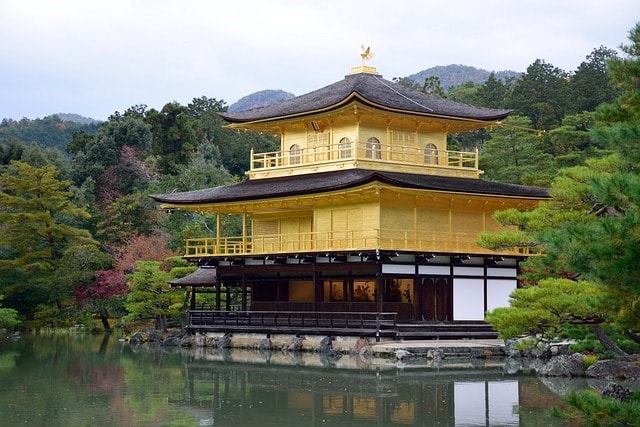
Kinkaku-ji, or the Golden Pavilion, is one of Kyoto’s most iconic landmarks. This stunning Zen Buddhist temple, with its gold leaf-covered exterior, stands majestically amidst serene gardens and a reflective pond, creating a picture-perfect scene. Visiting Kinkaku-ji in the early morning or late afternoon allows you to avoid the crowds and fully appreciate its tranquil beauty.
The temple is a must-visit for anyone exploring the Kansai region, offering a glimpse into the elegance and serenity of traditional Japanese culture.
Fushimi Inari Taisha

Fushimi Inari Taisha, another of Kyoto’s renowned sites, is famous for its thousands of vermilion torii gates that create a mesmerizing pathway up Mount Inari. As you walk through these gates, you embark on a spiritual journey that leads to various smaller shrines and scenic viewpoints.
The contrast of vibrant red against the lush greenery makes this shrine a photographer’s paradise and a significant cultural experience in the Kansai region.
Gion District
The Gion District is Kyoto’s historic heart, where the past and present coexist harmoniously. Known for its traditional wooden machiya houses and vibrant geisha culture, Gion offers a unique glimpse into the elegance of old Japan.
Strolling through Hanamikoji Street in the evening, you might spot geiko and maiko, adding a touch of timeless charm to your visit. Gion is a must-visit for anyone seeking to experience the soul of Kyoto.
Osaka: The Heartbeat of Modern Japan
Osaka, the pulsating heart of modern Japan, is a city that never sleeps. Known for its bustling markets, vibrant nightlife, and culinary delights, Osaka offers a dynamic contrast to the serene beauty of Kyoto. The city’s energy is palpable, with areas like Namba and Shinsaibashi buzzing with activity day and night. Whether you’re indulging in street food or exploring the city’s modern shopping districts, Osaka promises an exhilarating experience.
What sets Osaka apart is its reputation as a culinary capital. Known for dishes like takoyaki, okonomiyaki, and yakitori, Osaka’s food scene is both diverse and delectable. Many believe that Osaka offers a more vibrant dining and nightlife experience than Tokyo, making it a top destination for food lovers. From fine dining to affordable street eats, Osaka’s culinary landscape is a feast for the senses.
Osaka Castle

Osaka Castle, a symbol of the city’s rich history, was originally built in 1583 by Hideyoshi Toyotomi, the ‘Napoleon of Japan’. The current main tower, reconstructed in 1931, houses a museum with over 10,000 artifacts related to Osaka’s history.
From the observation deck at the top, visitors can enjoy panoramic views of the city, making it a must-visit landmark in the Kansai region.
Dotonbori
Dotonbori, Osaka’s lively entertainment district, is famous for:
Its illuminated billboards and neon lights
The iconic Glico running man sign
The vibrant street food scene, featuring favorites like takoyaki and okonomiyaki
Dotonbori is a sensory delight.
The district’s theaters, bars, and nightclubs offer endless entertainment options, ensuring that the fun never stops in Osaka.
Universal Studios Japan
Universal Studios Japan in Osaka is a haven for thrill-seekers and movie buffs alike. The theme park features attractions based on popular movies such as ‘Harry Potter,’ ‘Jurassic Park,’ and ‘Despicable Me,’ drawing millions of visitors each year.
The interactive ‘Super Nintendo World’ offers a unique gaming experience, transporting visitors into the immersive world of their favorite video games.
Nara: Ancient Capital and Natural Beauty
Nara, Japan’s first permanent capital from 710 to 784, is a city rich in historical significance and natural beauty. Home to numerous UNESCO World Heritage sites and national treasures, Nara offers a captivating journey through Japan’s ancient past. The city’s blend of historical sites, cultural heritage, and unique wildlife experiences makes it a must-visit destination in the Kansai region.
One of Nara’s most famous attractions is Nara Park, where friendly Sika deer roam freely, adding a charming touch to the city’s historic ambiance. Easily accessible by train from both Osaka and Kyoto, Nara is perfect for a day trip or an extended stay. The city’s temples, shrines, and natural beauty create an enchanting atmosphere that captivates visitors.
Todai-ji Temple
Todai-ji Temple in Nara is a UNESCO World Heritage Site and part of the ‘Historic Monuments of Ancient Nara’. The temple houses the world’s largest bronze Buddha statue, commissioned by Emperor Shōmu, and is a marvel of Japanese history and architecture.
The Great Buddha Hall (Daibutsuden), reconstructed in 1709, is one of the largest wooden structures in the world, making Todai-ji a must-see for visitors to Nara.
Kasuga Taisha Shrine
Kasuga Taisha Shrine, an ancient Shinto shrine in Nara, is renowned for its many lanterns and serene forest surroundings. The shrine’s bronze and stone lanterns, which are lit twice a year during the Lantern Festivals, create a mystical and enchanting atmosphere.
Set amid beautiful forest surroundings, Kasuga Taisha Shrine offers a tranquil retreat from the bustling city.
Nara Park
Nara Park is a must-visit for anyone traveling to Nara. The park is famous for its friendly Sika deer that roam freely, considered sacred and messengers of the gods. Visitors can buy special crackers to feed these tame animals, creating delightful interactions against the backdrop of the park’s enchanting scenery.
The park is also a popular spot for cherry blossom viewing, adding to its allure.
Kobe: Blend of International and Local Flavors
Kobe is a city that offers a diverse range of experiences, including:
Scenic harbor
Well-preserved Western-style houses in the Kitano district
High-quality sake from the Nada district
Culinary scene, highlighted by the world-renowned Kobe beef
These attractions blend international influences with local traditions, creating a unique cosmopolitan atmosphere. Kobe is a must-visit destination for food enthusiasts and those seeking cultural experiences.
The waterfront area, Harborland, is a popular spot for shopping, dining, and entertainment, offering stunning views of the harbor. The Mosaic complex, located within Harborland, features a variety of restaurants and shops, making it a perfect place to relax and enjoy the vibrant atmosphere. For those seeking a touch of nostalgia, Gaslight Street is beautifully illuminated in the evenings, adding a charming ambiance to the area.
Harborland
Harborland is a bustling waterfront area in Kobe, renowned for its shopping, dining, and entertainment options. The district features the prominent Umie shopping complex, which includes Mosaic, South Mall, and North Mall, providing a wide range of retail and culinary experiences.
With its scenic harbor views and vibrant atmosphere, Harborland is a perfect destination for visitors looking to explore Kobe’s urban charm.
Learn more, visit Important to know about Kobe Harborland | Japan.
Mount Rokko
Mount Rokko offers breathtaking panoramic views of Kobe and Osaka Bay, making it a popular spot for hiking and outdoor activities. The mountain is home to the Rokko Alpine Botanical Garden, which showcases a variety of alpine and cold-region plants, adding to its natural beauty.
Whether you’re hiking the trails or simply enjoying the scenic vistas, Mount Rokko provides a refreshing escape from the city’s hustle and bustle.
Arima Onsen
Arima Onsen is one of Japan’s oldest and most famous hot spring resorts, known for its therapeutic baths. The resort offers two distinct types of thermal waters: ‘Kinsen’ (gold water) and ‘Ginsen’ (silver water), each believed to have unique healing properties.
The golden springs are rich in iron and salt, while the silver springs are clear and contain radium and carbonate, providing a relaxing and rejuvenating experience.
Himeji: Architectural Marvel
Himeji is best known for its architectural marvel, Himeji Castle, also known as the White Heron Castle. This UNESCO World Heritage site is celebrated for its elegant white appearance and advanced defense systems, making it one of Japan’s finest surviving examples of early 17th-century castle architecture. Beyond the castle, Himeji offers attractions like Kokoen Garden and Engyo-ji Temple, each showcasing the city’s historical significance and natural beauty.
Visitors to Himeji Castle can explore its 83 buildings, including the main keep, which is a masterpiece of wooden architecture. The castle’s rich history, spanning almost three centuries as a feudal domain center, adds to its allure. With its picturesque gardens and serene temple settings, Himeji provides a perfect blend of cultural and natural experiences.
Himeji Castle
Himeji Castle, often referred to as the White Heron Castle, is a majestic structure that stands as a testament to Japan’s architectural ingenuity. The castle’s elegant white plastered walls and advanced defense systems make it a remarkable example of early 17th-century Japanese castle architecture.
As one of Japan’s twelve original castles that have survived since the feudal period, Himeji Castle is a must-visit landmark for history enthusiasts.
Kokoen Garden
Kokoen Garden, located just west of Himeji Castle’s main gate, is a beautifully landscaped garden complex that showcases various traditional Japanese garden styles. Constructed on the former site of the feudal lord’s west residence, the garden features nine separate, walled gardens, each with its unique design.
Visitors can stroll through the garden of the lord’s residence, a tea garden, a pine tree garden, and more, enjoying the serene beauty and historical ambiance.
Engyo-ji Temple
Engyo-ji Temple, located on Mount Shosha, offers a serene and picturesque setting that has been a place of spiritual retreat for over a thousand years. The temple complex is renowned for its scenic beauty, often depicted in films and media, and its lush forests and tranquil atmosphere make it an ideal retreat.
Visitors can explore the historic buildings and enjoy the peaceful surroundings, experiencing the spiritual heritage of Himeji.
Wakayama: Spiritual Retreat
Wakayama Prefecture is a destination that combines spiritual and historical sites with natural beauty, making it a compelling place for a retreat. The region is known for the Kumano Kodo Pilgrimage Trails, a UNESCO World Heritage site that offers unique trekking experiences through scenic landscapes and forests. These ancient routes lead to sacred sites like Kumano Hongu Taisha, Kumano Hayatama Taisha, and Kumano Nachi Taisha, each with its spiritual significance.
Another highlight of Wakayama is Nachi Falls, one of Japan’s tallest waterfalls, located near the Kumano Nachi Taisha shrine. The stunning coastal scenery and the spiritual ambiance of the area make it a must-visit destination.
Additionally, Mount Koya, with its extensive Buddhist monastery complex, offers a unique opportunity to experience temple lodging and participate in monastic life.
Mount Koya
Mount Koya is a significant religious destination, home to Kongobu-ji, the head temple of Shingon Buddhism, and Okunoin, the mausoleum of Kobo Daishi. Visitors can stay in temple lodgings known as shukubo, experiencing monastic life and participating in morning prayers and meditation sessions.
The serene and spiritual atmosphere of Mount Koya makes it a unique and enriching experience for travelers.
Kumano Kodo Pilgrimage Trails
The Kumano Kodo Pilgrimage Trails have been used by Japanese emperors and common people for over a thousand years, reflecting their deep spiritual significance. These trails, including the Nakahechi, Kohechi, and Omine Okugake routes, lead to the three grand shrines known as the Kumano Sanzan.
Recognized as a UNESCO World Heritage site, the Kumano Kodo trails offer a unique opportunity to trek through scenic landscapes and forests, connecting with Japan’s spiritual heritage.
Nachi Falls
Nachi Falls, located near Nachi-Katsuura in Wakayama, is one of Japan’s tallest and most scenic waterfalls. The falls are situated near Kumano Nachi Taisha, a grand shrine that adds spiritual significance to the area.
The stunning coastal scenery and the harmonious blend of natural and spiritual beauty make Nachi Falls a must-visit destination in the Kansai region.
Lake Biwa: Natural Splendor
Lake Biwa, Japan’s largest freshwater lake, is a haven for nature lovers and outdoor enthusiasts. The lake offers a variety of recreational activities, including boating, fishing, and hiking, making it an ideal destination for those seeking adventure and relaxation. The picturesque landscapes surrounding Lake Biwa, with their lush greenery and mountainous views, provide a perfect backdrop for picnicking and bird-watching.
The shores of Lake Biwa are dotted with scenic spots that offer stunning views and serene settings. Whether you’re exploring historical sites like Hikone Castle or enjoying the clear waters of Omi-Maiko Beach, Lake Biwa’s natural beauty is sure to captivate you.
Hikone Castle
Hikone Castle, completed in 1622, is an original keep that has survived from the feudal era, making it a national treasure. Visitors can climb to the top of the castle’s three-storied keep for panoramic views over the castle grounds and the city.
The beautifully landscaped gardens and the Hikone Castle Museum, which includes a partial reconstruction of the former palace buildings, add to the historical charm of this site.
Chikubu Island
Chikubu Island, located in Lake Biwa, is home to the historical temples Tsukubusuma Jinja and Hōgon-ji, which date back to the 8th century. The island, designated as a National Historic Site and Place of Scenic Beauty, offers a rich blend of cultural heritage and natural beauty.
Visitors can explore the island’s historical structures, including the Kannon-dō and Karamon-style gate, brought by Toyotomi Hideyori, and enjoy the serene and scenic surroundings.
Omi-Maiko Beach
Omi-Maiko Beach is a popular spot for:
swimming
boating
picnicking
enjoying scenic views of Lake Biwa and its surrounding mountains
The beach features clear waters and pristine white sands, making it a perfect destination for a relaxing day out.
Whether you’re enjoying the water activities or simply soaking in the natural beauty, Omi-Maiko Beach provides a refreshing escape.
Kii Peninsula: Coastal Adventures
The Kii Peninsula, with its rugged coastlines shaped by centuries of sea erosion, offers a mix of historical sites and natural hot springs along its coast. The peninsula’s scenic beauty, featuring rocky cliffs and views across the Seto Inland Sea to Shikoku, makes it a paradise for outdoor enthusiasts. Historical sites like the Sandanbeki cliffs and caves, once used as pirate hideouts, add a touch of adventure to the region.
Cycling the Kii Peninsula offers:
Stunning coastal features
Challenging routes with heavy vehicle traffic
Exploration of natural hot springs
Trekking through rugged landscapes
The Kii Peninsula promises an exhilarating and unforgettable experience.
Shirahama Onsen
Shirahama Onsen is one of Japan’s oldest hot spring resorts, dating back 1,300 years. The resort area is known for its high-rise hotels and resorts, as well as the sparkling white sands of Shirarahama Beach.
Visitors can enjoy the outdoor rock baths of Saki-no-Yu, offering stunning views of the Pacific Ocean while soaking in the therapeutic waters.
Kushimoto Marine Park
Kushimoto Marine Park is renowned for its diverse marine life and coral reefs, hosting the northernmost coral reef ecosystem in the world. The park features a 24-meter underwater tunnel, allowing visitors to experience the vibrant marine life up close.
Additionally, visitors can feed sea turtles at the Sea Turtle Park within Kushimoto Marine Park, adding to the unique and interactive experience.
Kumano Nachi Taisha
Kumano Nachi Taisha is a grand Shinto shrine known for its significance in Japanese religious history. Located near Nachi Falls, one of Japan’s tallest waterfalls, the shrine offers a harmonious blend of spiritual and natural beauty.
As part of the Kumano Sanzan, Kumano Nachi Taisha plays a central role in the Kumano Kodo pilgrimage routes, making it a significant cultural and spiritual destination.
Efficient Transportation Network in Kansai
The Kansai region boasts an extensive and efficient transportation network, making it easy to travel between major cities like Kyoto, Osaka, Nara, and Kobe. The network includes the Shinkansen, several private railways, and extensive bus services, ensuring that visitors can navigate the region with ease and convenience. This well-developed infrastructure allows travelers to explore the diverse attractions of Kansai without the need for a car.
One of the key benefits of Kansai’s transportation system is the availability of various rail passes, such as the Japan Rail Pass and the Kansai Area Pass, which offer unlimited travel on JR trains, buses, and ferries within the region. These passes provide a cost-effective way to explore Kansai’s top destinations, making travel both affordable and enjoyable.
Japan Rail Pass
The Japan Rail Pass is an excellent option for travelers looking to explore the Kansai region extensively. This pass allows unlimited travel on JR trains, buses, and ferries, making it easy to hop between cities like Kyoto, Osaka, Nara, and Kobe.
The Kansai Area Pass, in particular, offers unlimited travel on certain JR West trains and buses within the region, providing great value for those planning to visit multiple destinations.
Major Train Lines
Kansai’s major train lines, such as the JR Kyoto Line, JR Kobe Line, and the Nara Line, are essential routes connecting the region’s top destinations. The JR Kyoto Line connects Kyoto to Osaka in approximately 28 minutes, while the Shinkansen line between Kyoto and Shin-Osaka takes only about 14 minutes.
The Hankyu Railway line also offers a convenient connection between Kawaramachi in Kyoto and Umeda in Osaka, making travel between these major cities quick and efficient.
Local Transport Tips
Navigating the Kansai region is made easy with its well-developed network of buses and trains. In urban areas like Osaka and Kyoto, metro and bus networks are highly integrated, allowing seamless transfers. For longer-distance travel between cities, Japan Rail Passes are recommended, while local transport cards or passes are the most cost-effective option for travel within cities.
Utilizing transportation apps can also significantly ease navigation and planning within Kansai, ensuring a smooth and hassle-free travel experience.
Cultural Festivals and Events
The Kansai region is renowned for its vibrant cultural festivals, which highlight the area’s deep-rooted traditions and community spirit. These festivals are a testament to the rich historical and cultural heritage of Kansai, offering visitors a chance to experience traditional Japanese culture in its most exuberant form. Major events take place throughout the year in cities like Kyoto, Osaka, and Kobe, each celebrating unique aspects of the region’s history and traditions.
Among the most notable festivals are the Gion Matsuri in Kyoto, the Tenjin Matsuri in Osaka, and the Kobe Luminarie. Each of these events brings the community together in celebration, featuring elaborate processions, traditional costumes, and stunning visual displays. These festivals not only preserve the cultural legacy of Kansai but also provide a vibrant and engaging experience for visitors from around the world.
Gion Matsuri
Gion Matsuri, held throughout the entire month of July, is the festival of Yasaka Shrine in Kyoto and dates back to 869 AD. The festival spans almost two weeks, with the main events occurring on the 17th and 24th, known as the Yamaboko Junko.
The grand procession of beautifully decorated floats, or yamaboko, which can reach up to 25 meters in height, is the main attraction, drawing thousands of participants and spectators.
Tenjin Matsuri
Tenjin Matsuri, held annually in Osaka on July 24-25, is one of Japan’s top three festivals. Dedicated to Sugawara Michizane, the deity of scholarship, this festival features a dynamic land procession followed by a river procession on the Okawa River, where boats are illuminated and fireworks are displayed.
The festival, which dates back to the 10th century, honors the rich cultural heritage and communal spirit of the Osaka Plain region.
Kobe Luminarie
Kobe Luminarie is an annual light festival held in December to commemorate the victims of the Great Hanshin-Awaji Earthquake of 1995. The festival features elaborate light displays and installations designed by Italian artists, transforming Kobe’s city center into a magical wonderland each winter.
Attracting millions of visitors each year, Kobe Luminarie is one of the region’s most significant and emotional events, celebrating resilience and hope.
Summary
The Kansai region of Japan, with its rich tapestry of history, culture, and natural beauty, offers a unique and unforgettable travel experience. From the timeless allure of Kyoto and the vibrant energy of Osaka to the serene beauty of Nara and the cosmopolitan charm of Kobe, each city in Kansai tells its own story. The region’s well-preserved historical sites, such as Himeji Castle and Todai-ji Temple, provide a glimpse into Japan’s storied past, while its modern attractions, like Universal Studios Japan, showcase the country’s innovative spirit.
Whether you are exploring the sacred sites in Wakayama, enjoying the recreational activities around Lake Biwa, or embarking on coastal adventures in the Kii Peninsula, Kansai promises a diverse range of experiences that cater to all interests. The region’s efficient transportation network makes it easy to navigate and explore, ensuring you get the most out of your visit. As you immerse yourself in the cultural festivals and events that highlight Kansai’s rich heritage, you will undoubtedly leave with a deeper appreciation for Japan’s history and culture.
Frequently Asked Questions
What makes the Kansai region unique compared to other regions in Japan?
The Kansai region is unique compared to other regions in Japan because of its rich historical and cultural heritage, including ancient capitals like Kyoto and Nara, UNESCO World Heritage sites, and a diverse culinary scene.
What are some must-visit sites in Kyoto?
You must visit Kinkaku-ji (Golden Pavilion), Fushimi Inari Taisha with its iconic torii gates, and the historic Gion District in Kyoto to experience its iconic cultural and historical sites.
How is Osaka different from Kyoto?
Osaka is known for its modern cityscape, bustling nightlife, and culinary delights, offering a vibrant contrast to Kyoto’s serene temples, shrines, and traditional culture. Osaka’s dynamic energy and diverse food scene make it a popular destination for those seeking a more contemporary experience.
Can you recommend any outdoor activities in the Kansai region?
Yes, there are plenty of outdoor activities to enjoy in the Kansai region, including hiking on Mount Rokko, boating and fishing on Lake Biwa, trekking the Kumano Kodo Pilgrimage Trails, and visiting the scenic beaches of Omi-Maiko and natural hot springs at Shirahama Onsen.
What is the best way to travel around the Kansai region?
The best way to travel around the Kansai region is by using the extensive rail network, including the Shinkansen and various JR lines. The Japan Rail Pass and Kansai Area Pass provide unlimited travel on JR trains, buses, and ferries within the region, making it easy and cost-effective to explore.
